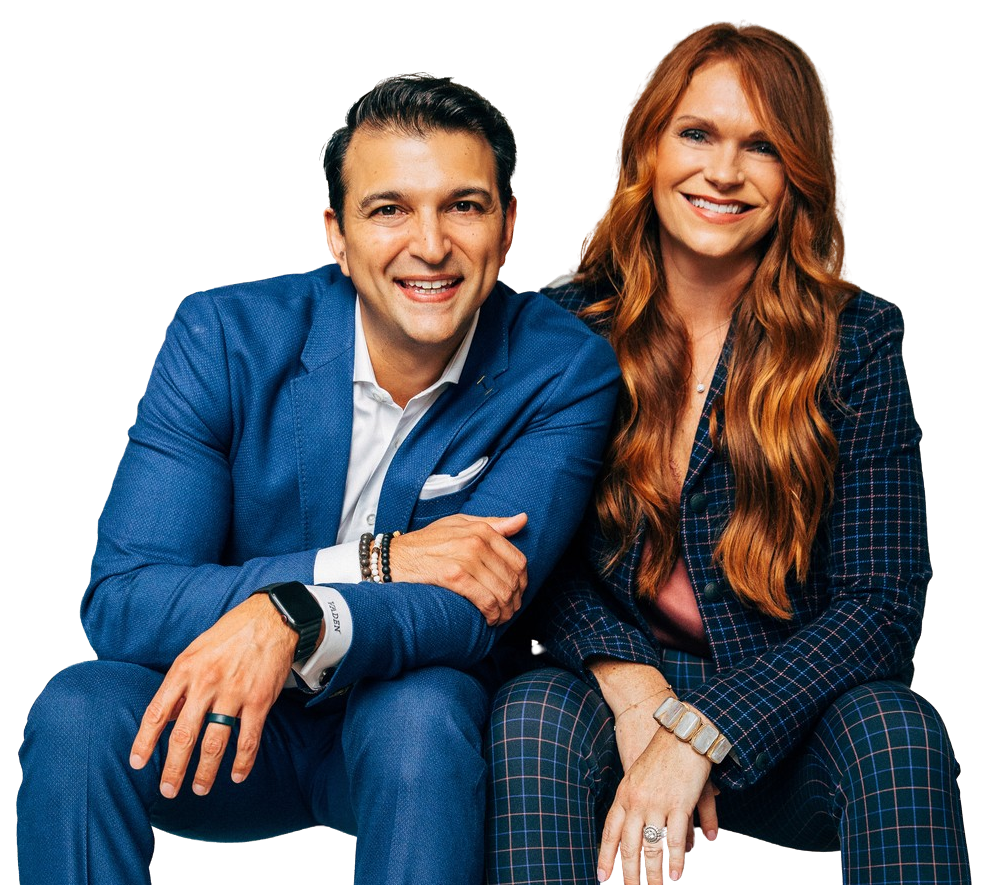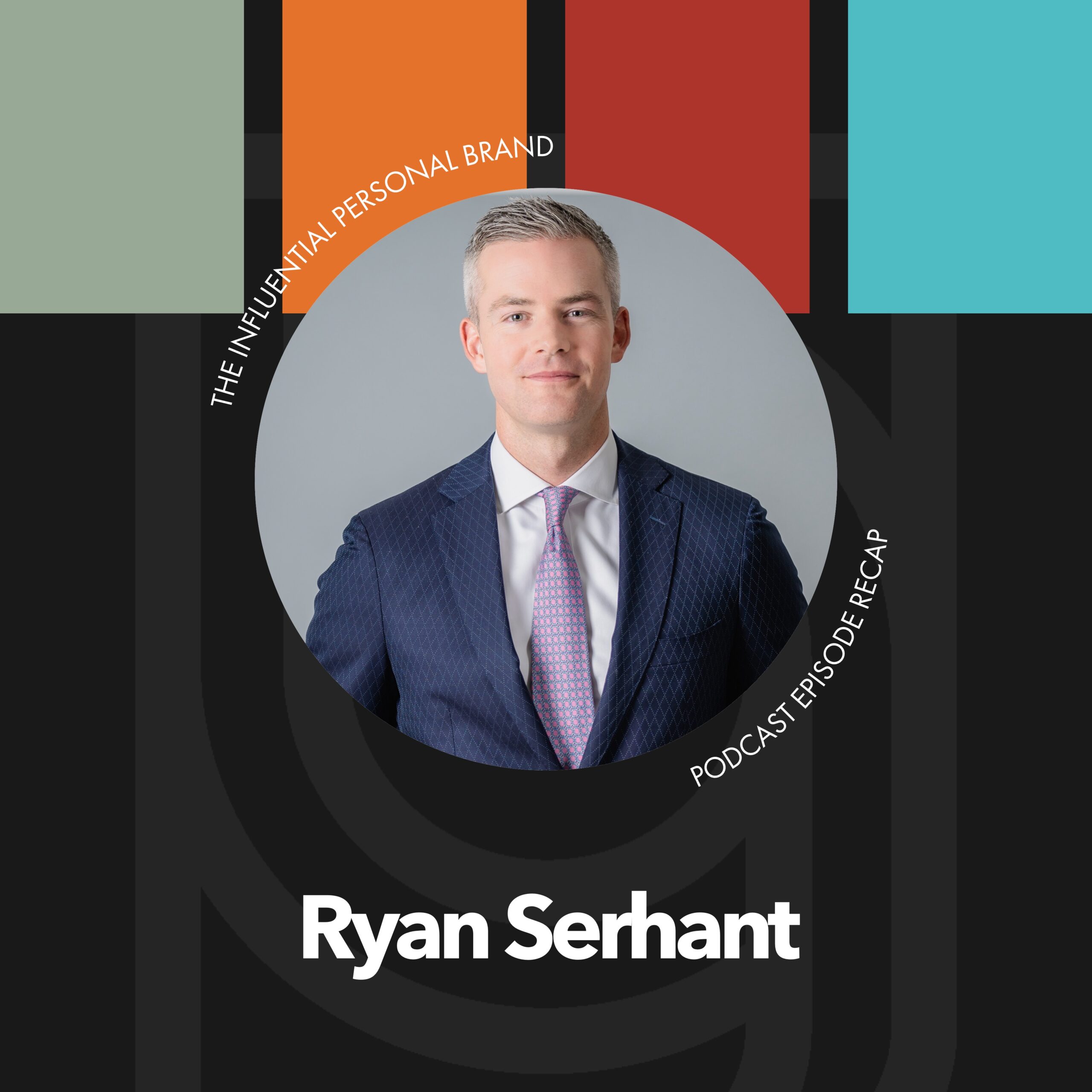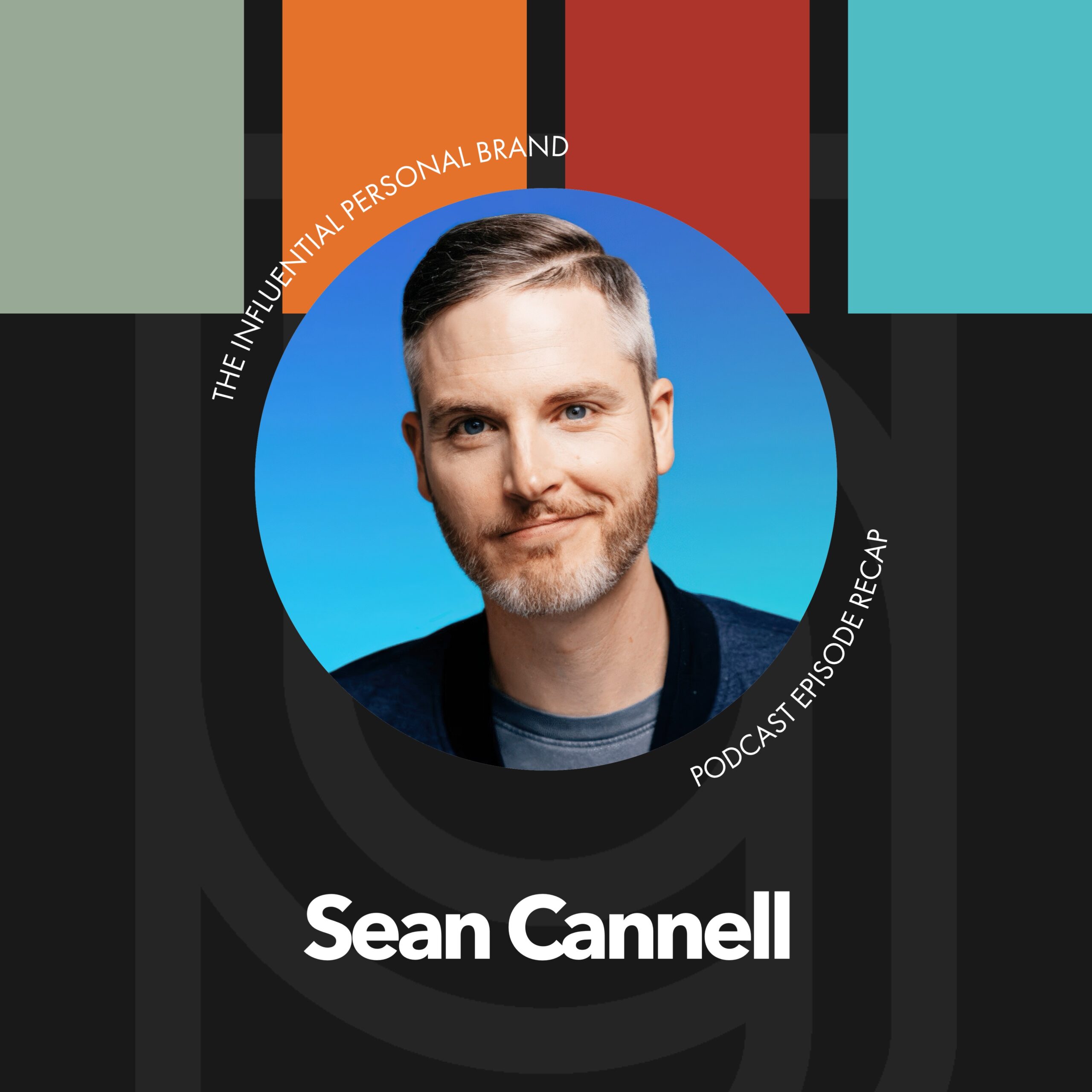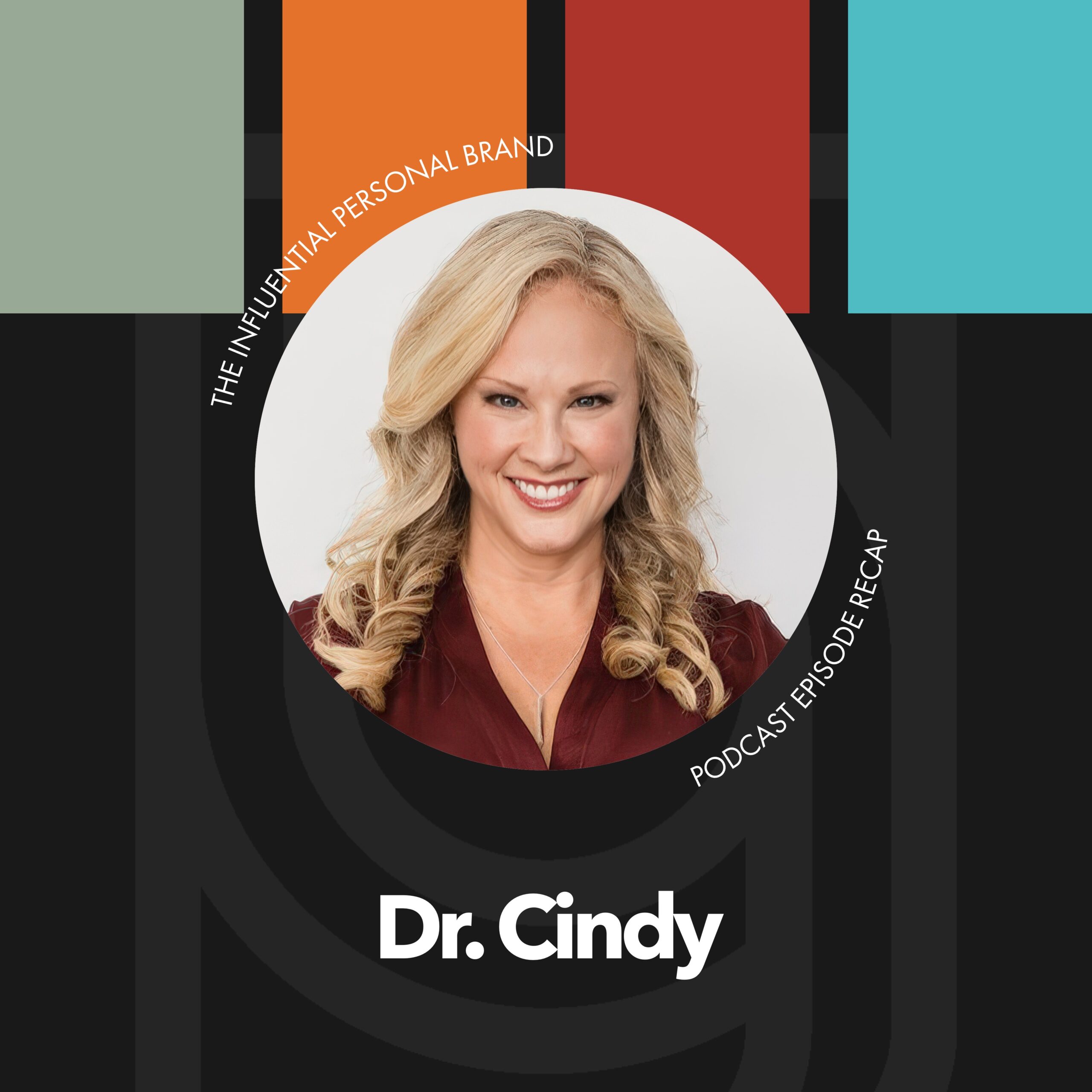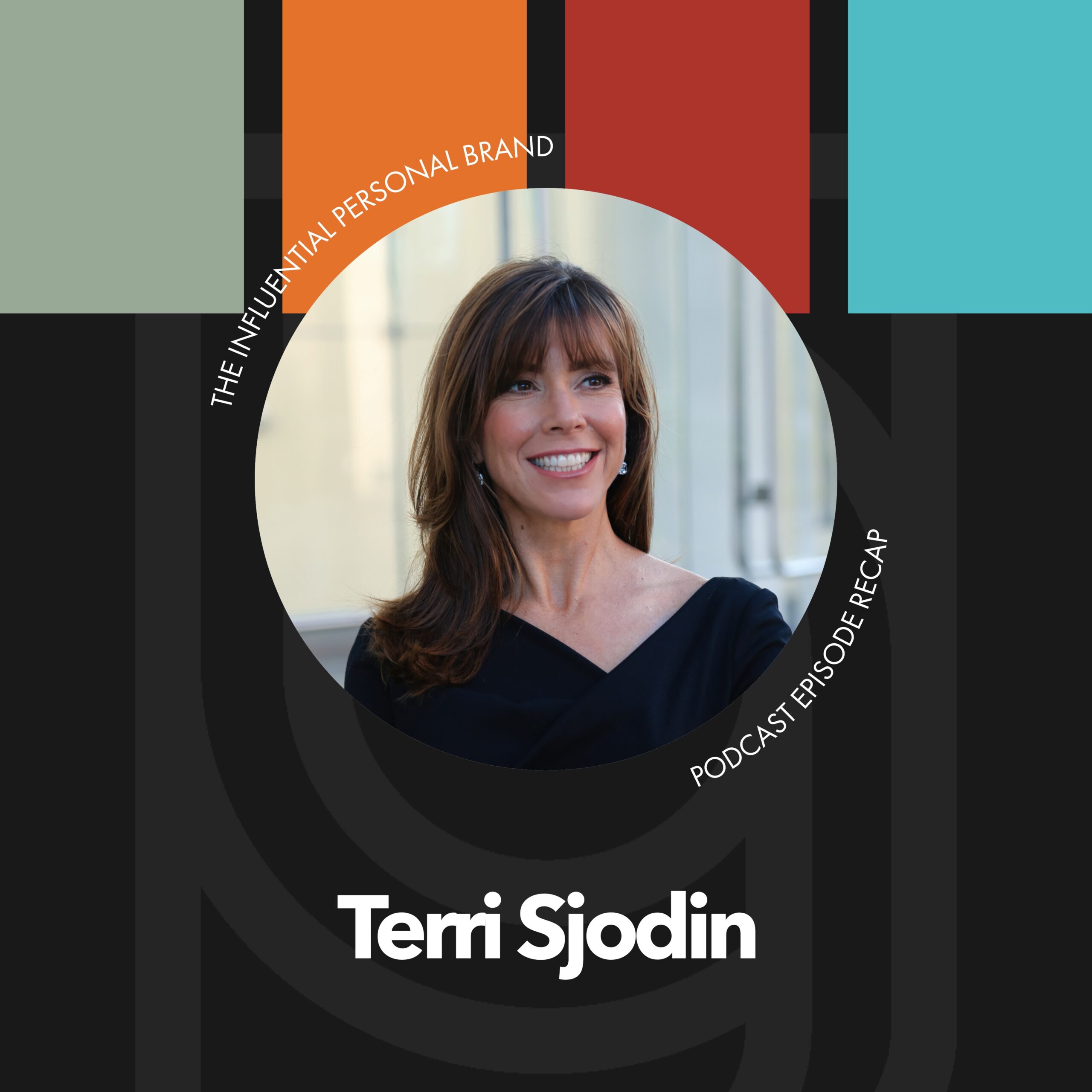Hey, welcome to this recap edition of the influential personal brand podcast. It’s your man, Rory Vaden breaking down the interview and the recap with Eric Dahan and I’m rolling solo, no wifey and CEO. AJ on this one. She’s out traveling, but I am fascinated with this interview with Eric, because if you haven’t listened to the interview yet, I mean, this is guy who has an agency and also developing software that is specifically sourcing influencers to pair them up with his corporate clients. These companies who have money to spend on advertising and they are recognizing the power of micro influencers. And in his case, they’re not all micro-influencers. There, there are lots of bigger ones. But this is amazing. I mean, this is, I like the first thing that jumps out to me about this interview, which is not part of like what my takeaway is, but it’s, it’s just something for you to realize and was something for me to realize is like, this is really incredible.
That big brands and big companies are looking to for the most part every day, average normal people. I mean influencers, but micro influencers and paying money. They’ve got budgets, they’re hiring companies like Eric’s to go out and do the research and source people to say, this person is reaching our audience and showing up with real money to pay you, not, not the radio stations, not the people who own the billboards, not the people who own the TV commercials. You know, not the people with the who own the magazines, but that you, an individual person quote unquote an influencer, whether or not you think of yourself that way, but just you as a messenger and someone serving and cultivating an audience that you have the power to monetize that audience by way of the, the most classic. And this is what’s fascinating is in the one way, this is so new is it’s just the idea of micro influencers in two other ways.
It’s as old as time one is paying for celebrity endorsements, right? So we all understand that we would expect, you know, Brad Pitt to get paid a ton of money to be in a commercial. So we understand the concept of celebrity endorsements, both what’s new is it’s like it’s the local celebrity, the super local hyper niche, like micro influencer celebrity. So we kind of understand the concept, but it’s at a much more granular level, which is powerful, but then you also have the dichotomy of the, the age old, most pure form of advertising. There is companies paying to put their brand, their message, their, their commercial, their product placement in front of viewers in front of listeners in front of eyes and ears to get the message out. And that vehicle, that model has existed ever since there was media, right? Like pretty much ever, ever since there has been the, the modality of TV or radio or newspaper or print or magazine, like, and, and even probably before that, right, is just the idea that companies will pay and they have budgets to pay.
They, they have advertising as a part of the way that they function and they grow their business and they’ve got money to spend and they’re willing to spend that money in whatever vehicle gets their brand in front of their people and these micro influencers, which is you and it’s me. I mean, it could be at which, which is amazing to think of that even though you don’t, you know, you might not be a huge media company and you might not have hundreds of thousands of followers or even tens of thousands of followers, but that you can do a better job of reaching their core market in some ways, then like a national TV commercial, because they are captive. And I found, you know, this is powerful for me as an author. And as you know, somebody who is is an influencer, like being on other people’s podcasts, we see more direct response from that than we do from national TV and from major national hits.
Not, not always, sometimes, you know, the major national hits are huge. They have major, major impact, but sometimes, you know, I can think of one time specifically where I was on a major national morning TV show. And it was like, I literally don’t know that a single person saw it. I mean, I know they did, but we got like zero response, zero, like speaking leads, zero customer coaching requests, zero, you know, book us for this podcast, appearance, zero like tweets and comments. It was other than friends and family being like, Oh, Hey, I saw you. And no notable increase in book sales. And so brands and companies are waking up to this idea that, that the local person has influence, which is what has always been word of mouth, but now it is you and it is measurable and it’s trackable and it’s repeatable and scalable and predictable.
And that is fascinating to me. And somebody like Eric is out there living on the, you know, on the bleeding edge of this emerging space. So I just thought that was amazing in general, just to kind of realize and contextualize this interview with Eric of, of what this means. And, and if you’re new to this, if you’ve never heard of this, this concept is called influencer marketing and it is about getting brand deals. And that is what this is all about. So if you want brand deals, let’s talk about my three biggest takeaways from Eric, somebody who’s living in this all day every day. So number one, biggest takeaway of all don’t fake it, right? Don’t fake it. Don’t, don’t take the followers. Don’t fake the engagement, like the data is out there. The algorithms are out there, there’s the apps are out there.
Artificial intelligence is out there. Like if you want to have a legitimate shot at monetizing your personal brand through brand deals, which you may not. Right. And, and frankly, for me personally, and for brand builders group, the likelihood that we will ever care about this is, is very little we are much less likely to do a brand deal, like where a company’s paying to access us because we, it’s not worth it probably to us for that one time payment, when it cannibalizes our own offerings of our own coaching program, you know, like, which is our primary business is one-on-one coaching. So we, we would be more likely to do more of like an affiliate arrangement or something more long-term. So I don’t personally know that this will ever come into play for me, although it could, particularly as we kind of like focus more on my personal brand, now that brain builders group is kind of like up and running and starting to scale.
And, you know, we turn some attention maybe back to my personal brand, but anyways, regardless, don’t fake it even for yourself. Like if, if you’re faking it, the problem is you don’t know how you’re doing. Like you don’t get an honest assessment of what is there, which means you can’t make a strategic decision about what to do and how to move, to grow it. Because everything you do is like kinda clouded by this, this group of people who aren’t really followers. You know, now there’s a case to be made. And some people do this to just like nobody cares. I don’t care about audience engagement. All I make doing is a credibility play. I just need people to come out and see, I’ve got a lot of followers and they’re not check-in. And I don’t care about brand deals. And I literally just want, you know, whatever my clients are, members of the media to go, yeah, you know, you look credible because you got a lot of followers, you know, that’s a choice for you to make that’s a strategic decision that you gotta make.
A lot, this is perception. And so it’s, that’s something to consider. But if you want brand deals is the point, like if you want brand deals. And I would say, even if you don’t want brand deals, if you actually want to use the vehicle of social media and use the vehicle of audience building to drive real revenue growth for your company, don’t fake it, do the hard work and do the slow work. And don’t be embarrassed about how slow you’re growing or how small your following is. I mean, look, this is what he’s saying is going, you know, they don’t care. They’ve, they’ve got a budget based on how many impressions and they’ll pay you for whatever that is. But, you know, 10 qualified impressions is 10 qualified impressions. And, and I think some of these companies are realizing and waking up to the idea that we’re paying all this money for mass market media advertising.
And we’re not, we’re not even sure we’re reaching our right people. We could spend a lot less money in more targeted ways with influencers that are much easier to get ahold of and have, you know, probably a much smaller legal department and it’s easier and it’s faster and it’s more fun and it’s more organic. And it’s like, they’re supporting individual people and not you know, these huge enterprises. So just, I really loved what he said. Don’t fake it. The algorithm will pick it up and just, you need to know, like you gotta know, is my content working? Are we growing? Who are the people who are my followers? Like one of the most valuable parts of social media is not even just who you sell to. It’s being able to pull the analytics and go, this is the age. These are the geographic locations.
This is the gender. This is the income range. These are the industries. These are the job titles of the people I’m reaching. And these are the topics that my audience response to based on data. If I have a bunch of fake followers in there, then it’s like, I don’t really know what’s working in the data is constantly skewed. So, you know, just, just be really, really I guess, critical or cautious about doing the fake fake follower thing. And if you’re going to do it, you know, make sure you’re clear about why you’re doing it and just know it’s probably, you know, you’re, you’re missing out on some, some other things here, which, you know, might be a decision that you make, and those are just decisions you make. But that was the first thing. And I really believe, you know, clearly with artificial intelligence, that’s going to get smarter and smarter over time that, you know, at some point people like Eric are going to automate this whole, this whole space, this and, and companies are just going to literally go to some platform and say, I want to reach, you know, personal brands and, you know, some software or tool or AI will go scrape the web.
And it will say, ah, here’s the top 500 profiles that reach personal brands. And it’s like, Oh, brand builders group is on there and they’ll just email us and say, Hey, we got some money. This is what we think you’re reaching this number of people. Do you want it so fascinating, fascinating. Don’t fake it, pay attention to the data or, you know, think critically before you just kind of do the fake follower thing. Number two, simple it’s about supply and demand. This was a good reminder for me. I think this is a theme, as I’m even just talking this out of how there’s like a new thing going on here, a new movement that’s kind of fresh and fun and exciting. And at the same time, these are old principles, the principle of supply and demand, how many people are out there who do what you do, right?
And this is where the, the, the whole niching down thing is really powerful. If I have, you know, if I have, I mean, it can work for you and against you. If I have the world’s number one website on, you know, hand niche, Paul shoes for cats and kittens, then I probably have a very dedicated, loyal audience of cat owners who follow me, which means that pet smart is gonna, it’s going pay me a lot of money. Cause they know my entire platform, whether it’s a thousand or 10,000 or a hundred thousand, like they know I’m reaching their audience. There’s not really any question about it. And so that is super powerful. Now, at the same time you go, you got to pay attention and be mindful of what is the demand for it, right? So like how many, how many brands are interested in marketing to cat owners?
Well, probably a huge number. It’s a huge market. But if it’s, if it’s something else that’s like super specific, there may not be brands interested in that. So if you’re playing the brand deal game, which by the way is a dedicated business model. And it’s a difference in positioning. If you come through finding your brand DNA, which is our phase one course, one event curriculum experience, one of the things we help you get clear on in addition to what audience do you serve? What is your uniqueness? What is your unique solution? Your unique message is what is your, your perfect business model that is suited for you? The reason why is because when you, when you make a strategic decision, if you’re going after keynotes, that’s different than going after brand deals. The business model you’re in drives a lot of these, you know, practical on the ground decisions that you make every single day.
So you need to be mindful of what is my primary business model. That’s what we call it in brand DNA. It’s finding your primary business model. And we, we take people through something called the golden grid, where we look at what your short-term primary business model and your longterm. And then we look at secondary business models, ancillary revenue streams, and you know, all, all these different, different ways to the five ways to monetize your personal brand, et cetera, but know what business you’re in, make strategic decisions accordingly. Don’t just like wing it by the, you know, fly by the seat of your pants. And if you’re playing the brand deal game, it’s simple. How many other people are out there that do what you do? How many other people, and more specifically I think is going, how many other people out there have the same defined audiences you, and if you are clear on what that is, you know, just be, be aware of it.
Because if there are a lot of people out there who do what you do, or more specifically, as it relates to brand deals who reach the same people you reach, then that means supply is high. When supply is high, that drives the price down, meaning the money coming to you. So you got to that’s, that’s, that’s a factor for you to consider how many other people out there are, are doing what I do or what I’m thinking about doing. And if there’s a bunch of them, right. You know, like if it’s general interest motivation, there’s a ton of them, right? Like a ton of people are doing that. If it’s leadership, there’s a ton of, you know, you know, tie to people now, good ones, maybe, maybe less, but what’s how many people are reaching your audience. And then the other part is the demand calculation.
And look, I’m I’m I know this is like basic freshmen, econ from college, but a lot of people don’t understand supply and demand, even though super simple. So if supply goes up, the price goes down because that means I can, I don’t need to buy from you because I can buy from there’s a hundred other people that do what you do. So I’m paying attention to supply how many other people are out there, have an audience like mine have as a result of having a topic like mine. Then the other thing is what is the demand for what is the demand for it? How many companies or entities or enterprises or organizations want to reach this market using something like pets. As an example, there’s a lot of companies with a lot of big budgets who know that pet owners spend money on their pets and they’re willing to pay money to get access to those people.
There’s high demand for that. Versus, you know, if you teach tennis lessons, how many companies are interested in the game of tennis? There’s plenty, but it’s probably not as many. There’s not as many people who play tennis in the world as there are people who have pets, right? So you’re, you’re paying attention to that. And then in terms of the pricing, it’s just knowing how many impressions can you get, right? So part of when you’re selecting your topic and, and your positioning in the marketplace, which is really like what we do as good, if not better than anyone else in the world is help you determine your positioning in the market. What is your uniqueness? What should you be offering? What are the words you should use to say it? How do you differentiate yourself from the competition? And anyways, once you nail that, then it’s just a function of how many of those people can you reach?
How many impressions can you get for the brand? And by the way, you don’t need to wait for the brand to show up to you. When you know this, if you, if you select brand deals as your primary business model, you just simply go, ah, I’m reaching cat owners. And, and, and you’re clear on that, which should come from your data, which should come from your dashboards, which we talk about at our high traffic strategies event. You could also listen to the interview that we did with Praxis metrics Aja grin, and Megan canal Connell about digital dashboard tracking. Or you could come to us through our high traffic strategies course that will pull and tell you who you’re reaching. And then you can actually go approach brands. And you can say to them, look, I believe like PetSmart, I believe PetSmart, I am reaching your target audience.
Here’s the data on the audience I’m reaching. And that is a sales job. Like, you know, just like generating any business. Any revenue is a sales job. And if you’re, you know, if you’re in this game of brand deals, I think understanding brand deals, this is a great episode. The other great episode that we did on this was our, our friend and client and fan, and one of our close Nashvillian neighbors who we love and believe in and support. And she supports us is Julie Solomon. She’s one of the masters at brand deals. She’s got a course on this, that we are an affiliate for, but she did an interview like a free interview with us, or back in one of the early episodes that was just killer. Also Kevin Harrington, the interview we did with Kevin Harrington, which is, you know, he was the, basically the founder of the infomercial.
One of the, one of the godfathers of this whole movement, which is now digital, Mark has evolved to digital marketing. And just talking about the way that he thinks about, you know, pairing up brands and ad spend. So check it out. But it’s supply and demand, simple supply and demand as supply goes up, price goes down, okay. As demand goes up, price goes up, okay. Because if there’s high demand and low supply, that means a lot of people want it. And there’s not many places they can it from. So price goes up if supply goes down and yeah, demand goes up. That drives the price up. If supply goes up, okay, meaning I can get it from anywhere. And demand goes down, price goes down. Because there’s not that many people who want it and they can get it from anywhere, right?
Like that is how, how it works. So toilet paper, you can get anywhere. I mean, demand is stable, but it’s not like super high until when COVID hit. And there was a run on toilet paper. Everyone was afraid of running on toilet paper. And so demand, even though supply was high demand skyrocketed. And so that drove up the price, the price K follows demand as demand goes up, price goes up as demand goes down, price goes down, prices, inversely related. So price is directly correlated to demand, but prices, inversely correlated, or indirectly correlated to supply as supply goes up, price goes down. A lot of people make it well, it’s available. Price goes down. If supply goes down, few people make it. Or few people have it price that causes the price to go up. So price and demand are directly correlated. Price and supply are inversely correlated.
So there’s your freshmen, economics class brought to you by Rory Vaden. All right. Third takeaway for me here, which is, is, is probably the biggest. One of all was the attitude of how you got to think about these people as your customers. These, these companies are your partners. Like even, it’s like, even though they’re paying you for the ad, spend your working for them, your, they are your client, they are your customer. And I think too often influencers and people going specifically after brand deals, it’s almost kinda like this game of like, how can I, how can I trick a company into paying the most amount of money I can get out of them? I’m all for, you know, being paid fairly and being paid well for the work you’ve put in, but you’re not. You don’t want to game the system here. You want to find a good match.
You’re looking for a partner. You’re looking for a relationship. You want to be able to provide results to this person, to your advertisers. And this applies to podcasting too, right? Like you don’t want to just sell your ads to anybody. I mean, at some point you might need to for cashflow or whatever, but it’s like, that’s not really what we’re after. We’re trying to find mutually beneficial relationships. We want them to advertise. Not just once, like, Hey, I’ll pay you and your posts. You want to be able to deliver results. So it’s like, Hey, I’ll keep paying you. I’ll keep paying you. I’ll keep paying you. That’s a mutually beneficial relationship. And it’s just a great reminder that this business is about reputation. It’s about relationships. It’s about trust. If people aren’t buying from you, they don’t trust you. If they’re not coming back, they don’t trust you.
If they’re not following you, they don’t trust you. Like this is a game of trust. And you have to make sure you are always working to earn your client’s trust. To adapt something that I wrote about and take the stairs called the rent. Axiom that says success is never owned. It is only rented. And the rent is due every day. Trust is never owned. Trust is rented and the rent is due every day. You have to be out there servicing your customers, working to make their life better, not just taking money from them and disappearing. Be constantly thinking whether you’re doing brand deals or not. This goes for all your clients. How can I make my life better for my clients? How can I make it easier for them? How can I make them more money? This is what we are constantly thinking about at brand builders group.
I’m going, how can we make our, how can we make our affiliates more money? I want, I want them to get massive passive mailbox, money. How can we create more income for our clients and our referral partners? How can we help our clients be more successful in making money for themselves? How can we help our strategists make more money? How can we make our team members make more money? Like when you adopt that service centered attitude of how can I help everyone else win quickly, man, it’s like, it’s like the old psych. My man Zig Ziglar used to say, like, if you help enough other people get what they want, you will get what you want. So view these people as your partners, help them succeed and you will succeed. That’s all we’ve got for this recap edition. Thanks for tuning in. Keep coming back. We’re going to help you build and monetize your personal brand right here on the influential personal brand podcast.

